Best Business Plan samples with explanation
Here are 24 sample business plans & examples
You need to read sample business plans when you’re writing your own. We’ll show you how to create a business plan that gets your business off to a great start, convinces investors to invest, and proves your venture is sustainable.
→ Download Now: Free Business Plan Template
How does a business plan look? Can you tell me how to write one that’s convincing and viable? We’ll take a look at some sample and template business plans, then we’ll talk about the perfect plan.
What a business plan should look like
Successful coaches have a unique plan for each game, that’s how they win so many games. The same goes for business. A thriving company needs to prepare for battle before it breaks into a market.
Business plans help you navigate the rough waters of starting up. If you refer to one, you’re on the right track. You can also convince investors to invest in you with a compelling business plan.
I don’t know what to do. Can you tell me how to format this? “I’m not even sure where to begin.”
In a business plan, you’ll see how the company plans to achieve its goals.
Business plan template for free
Business start-up document.
- What’s your idea?
- Investor pitch.
- Getting funding is easy.
- Let’s get started!
The following sections are usually in a business plan:
The executive summary
The executive summary is probably the most important part of the whole thing. In essence, it’s the introduction or overview, designed to grab readers’ attention and guide them through the rest of the plan. Business plans can be dozens or hundreds of pages long, so it’s important to keep it short.
Executive summaries usually include:
- Statement of mission
- History and leadership of the company
- A look at competitive advantage
- Projections
- Getting things done
Later on in the business plan, you’ll cover many of these topics in more detail. Don’t include more than the most important takeaways in the executive summary.
Business plan examples with executive summaries
Here’s an example made with HubSpot’s business plan template:
This executive summary gives potential investors a quick overview of everything this business plan will cover in an interesting way.
Here are some tips for writing your executive summary
- Clearly define a problem, explain how your product solves it, and why the market needs you.
- Highlight your value proposition, market opportunity, and growth potential.
- Support ideas with data and keep it concise.
- Put your audience in mind when you write your summary. Think about finances and return on investment for venture capitalists.
For more guidance, check out our tips for writing an effective executive summary.
Opportunities in the market
This is where you’ll talk about the market opportunity. What’s the gap in the current industry, and how does your product fill it?
You might include:
- Taking a look at the market
- Market share right now or in the future
- What’s new in the industry and what’s happening with consumers
- There’s a gap
- Why is there a gap?
- What you’re going to fill it with
Do a TAM, SAM, and SOM analysis and do market research on your industry to get a thorough understanding of the market opportunity. To get some insights for this section, you might also want to do a SWOT analysis.
An example of a market opportunity business plan
This example uses crucial data to show how big the potential market is and what part of it this service hopes to capture.
Here’s how to write a market opportunity section
- Think about demand and growth potential.
- Support your market forecast and projections with market research, surveys, and industry trends.
- Check out how regulation is changing, tech is advancing, and consumer behavior is changing.
- Make sure your sources are reliable.
- Show how you can make this work for your business.
What’s the competition like?
If you’re talking about market share, you’ll want to share who your top competitors are. You’ll want to understand why your customers might pick one brand over another since they probably have more than one. Analyzing your competitors can help you find out:
- Trends other brands might not be using
- Competitors’ strengths that may be obstacles
- Identifying your competition’s weaknesses
- Bringing something unique to the market that customers might like
Examples of competitive landscape business plans
Here’s a breakdown of who the top competitors are in the competitive landscape section. It also highlights specific industry knowledge and the importance of location, which shows useful industry experience. You’ll build trust when you’re able to execute your plan.
Here are some tips for writing your competitive landscape
- Focus on your most important findings after doing in-depth research.
- Find out what your unique selling proposition (USP) is compared to your direct and indirect competition.
- Differentiate your brand and products in a clear and realistic way.
- Find out what your competitors have going for them. Next, tell us how that information could affect your business.
- Analyze growth opportunities from a competitive perspective.
- Make your competitive analysis better by adding customer feedback.
Who’s your target audience?
You’ll be able to see who your customer segments are in this section. Can you tell me about your audience’s demographics and psychographics?
You’ll need to dig deeper if your immediate answer is “everyone.” Consider these questions:
- Who are the most likely demographics to need/buy your stuff?
- How would you describe this audience’s psychographics? It’s all about desires, triggering events, etc.
- What makes your stuff valuable to them?
Get in the mindset of your ideal customers and be clear on why you’re targeting them by building buyer personas.
Examples of business plans for target audiences
Using in-depth research, the example below makes conclusions about audience priorities. In addition, it analyzes how to create the right content for them.
Here are some tips for writing your target audience section
- Give details about your target audience’s size and growth potential.
- Show why your product is useful to your target audience by figuring out and refining their pain points.
- Give me a detailed breakdown of your customer acquisition strategy.
- What challenges you expect your business to face in acquiring customers, and how you plan to overcome them.
- Be sure to include case studies, testimonials, and other data to support your target audience.
- Your business plan should consider niche audiences and segments of your target audience.
Free Business Plan Template
The essential document for starting a business — custom built for your needs.
- Outline your idea.
- Pitch to investors.
- Secure funding.
- Get to work!
Strategies for marketing
Your marketing strategy will help you get new customers. Consider including info on:
Your brand positioning vision and how you’ll make it happen
You want to achieve these goals
How you’ll measure success
You’ll use these channels and distribution tactics
You might be able to help yourself with this part of your business plan if you already have a marketing plan.
An example of a marketing strategy business plan
The marketing strategy for Gawler is included in this business plan. There’s a comprehensive picture of how the community plans to use digital marketing.
Here are some tips for writing your marketing strategy
- Tell us how you think your brand vision will appeal to customers.
- Put in the budget and resources you’ll need.
- Describe specific marketing strategies.
- Make sure strategies are connected to earlier sections like target audience and competitor analysis.
- Scale your marketing strategy with your business growth.
- Show your ability to adapt your plan as things change with a range of channels and tactics.
Features and benefits
You’ll review the key features and benefits of your products and/or services in your business plan. Laying these out will give readers an idea of how you’re positioning yourself and what you’re going to say. It can even help them understand what you’re doing better.
Example of a business plan with key features and benefits
In the example below, we’ll outline the products and services of this business, along with why these qualities will attract customers.
Here are some tips for writing your key features and benefits
- Make sure you tell customers why and how they’ll get value from your product.
- To support the ideas in this section, use metrics and testimonials.
- Tell me how your products and services can scale.
- You might want to include a roadmap.
- Put your focus on what your customers need, and how the features and benefits you’re sharing can help.
- Demonstrate your ideas with case studies or pilot programs.
- Please proofread this section carefully, and remove any jargon.
Revenue & Pricing
Your cost structure and revenue streams will be discussed here. It’s important to have a solid pricing strategy so you stay competitive. This is why you might outline:
- Pricing breakdowns for each product or service
- Why your prices are higher or lower than your competitors
- Why customers would pay more if it’s higher
- If lower, how can you make your products or services cheaper
- What are your expectations for breakeven, margins, etc?
Example of a revenue and pricing plan
An overview of the business revenue model is followed by pricing for key products in this business plan example.
Here are some tips for writing your pricing and revenue section
- Describe your pricing strategy in detail. How you connect that strategy to customer needs.
- If you’re asking for a premium price, give us an idea of what makes that price point worthwhile.
- What are your plans for communicating pricing to customers?
- Create an overview of every revenue stream in your business and how it contributes to the overall picture.
- Let’s talk about how you’re going to create new revenue streams.
- Let’s see how pricing will vary by customer segment and how marketing strategies are aligned with pricing.
- Explain your revenue model and your value proposition.
The finances
This section is great for investors and leadership teams to figure out funding strategies, investment opportunities, etc. You’ll want to include three things, according to Forbes:
- Statement of Profits and Losses – This tells you whether your business is profitable or not.
- A cash flow statement shows how much cash a company has on hand by detailing incoming and outgoing cash.
- Assets, liabilities, and equity make up the balance sheet, which tells you how much a business is worth.
Here’s what you’ll want to include in your business plan, though some business plans may include more or less information.
Business plan example for financials
Example of a balance sheet in your business plan showing the level of detail you need:
Here are some tips for writing your financials
- This section is also about growth potential. Make a 3- to 5-year forecast using your data.
- Make sure investors are confident in your projections by including any data that supports them.
- Show your business plan is financially feasible with a break-even analysis. You can also use this info to pivot quickly as your business grows.
- Put a section in your plan that talks about potential risks and how sensitive it is to market changes.
- Make sure all the financial info in your plan is accurate.
- Your growth plans should align with any funding needs.
When you’re creating your business plan, keep in mind that each section will be different. Some may be paragraphs, while others could be charts or graphs.
There are different kinds of business plans
The formats above work for most business plans. You’ll need to decide what your goals are for your plan to determine its format and structure. Here’s a quick overview of different types of business plans. Here’s a more detailed overview.
Business startups
Business plans for startups are for coming up with new ideas.
You need a business plan if you’re starting a small business. All the major aspects of your business should be in the plan. For more detailed inspiration, check out this guide.
Feasibility study
Business feasibility plans focus on the product or service of the business. Startup business plans sometimes include feasibility plans. They can also be part of an already thriving organization’s new business plan.
Use internally
Your internal business plan can be used to share goals, strategies, or performance updates. Building support for ambitious goals with internal business plans is helpful.
The strategic plan
A strategic business plan is another business plan that’s often shared internally. In this plan, you’ll cover long-term business goals that weren’t in the startup plan.
Repositioning or buying a business
When a business is going through an acquisition or repositioning, it may need extra structure and support. Business plans like these describe how a company plans on acquiring or repositioning.
Getting bigger
Sometimes a business just grows as it keeps going. But most businesses need a structure with specific targets to grow. Business plans like this can help a company focus on short-term growth goals and align resources with them.
You can design your own website. The easiest way to make sure your website can accomplish all of these goals is to hire a pro. You’ll have more time to run and grow your business.
Please download your brochure for your business plan below – Myinvestorchoice is ranked the number 1 Agency on Upwork for preparing business plans

 Our Samples
Our Samples  Support
Support 


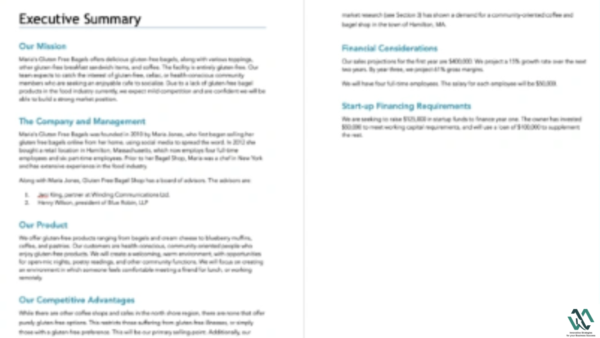

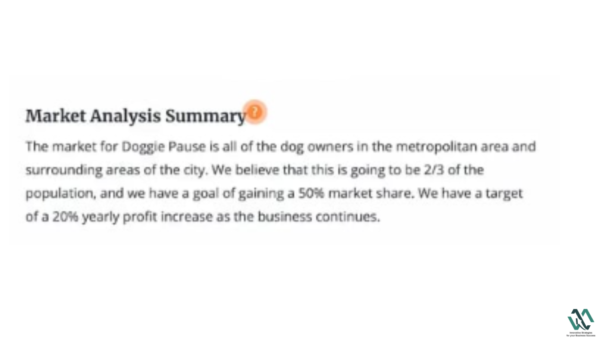
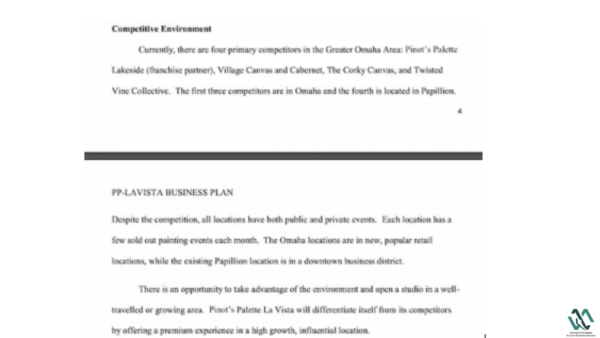

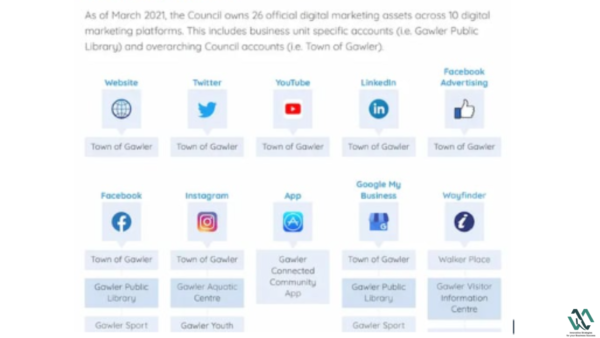
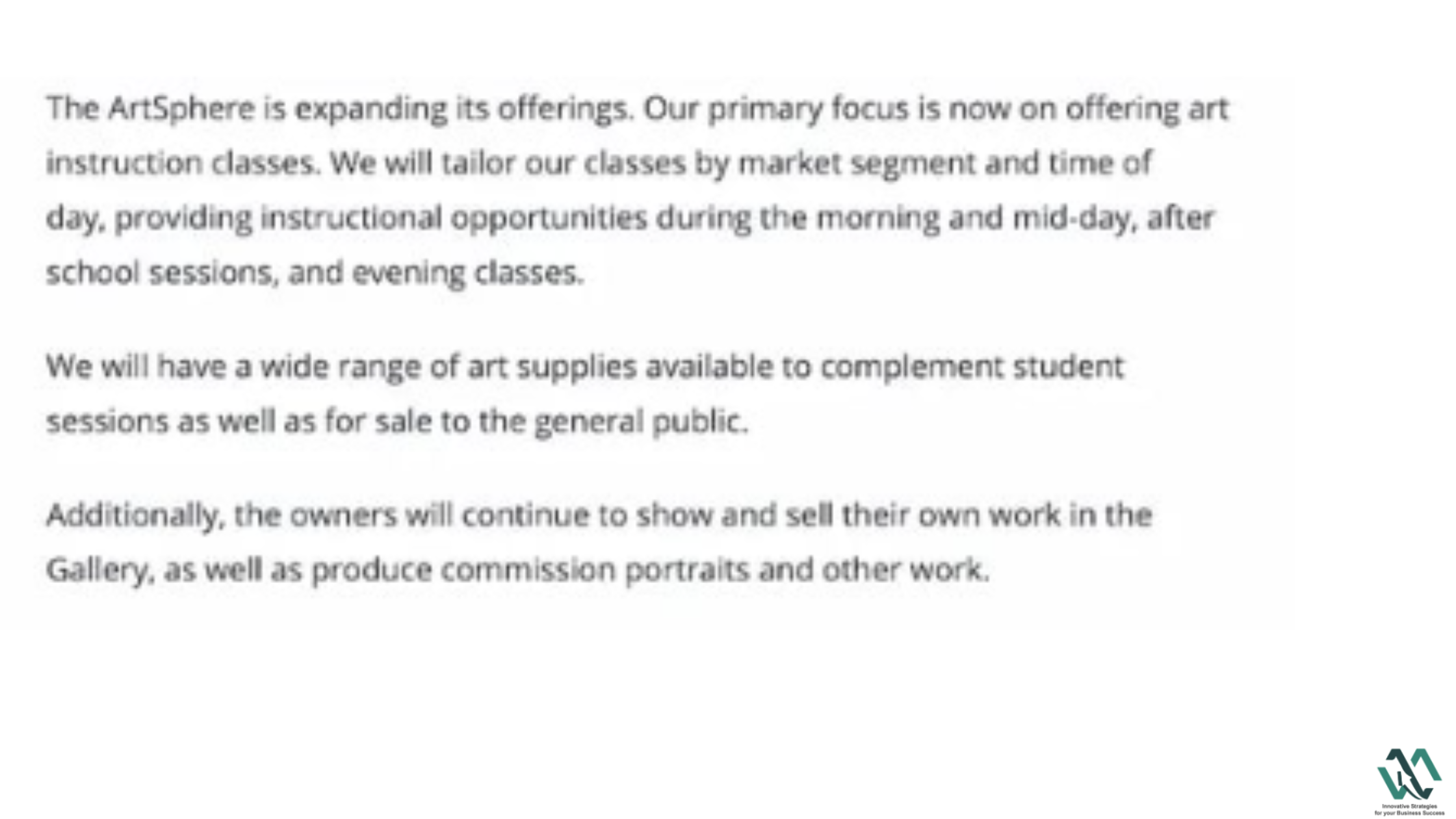




Tanya_M
July 9, 2024Very interesting info!Perfect just what I was looking for!Leadership